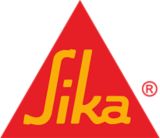
Sikaflex®-505 UV
Multi purpose silane terminated polymer adhesive sealant
Sikaflex®-505 UV is a 1-component silane terminated polymer (STP) adhesive sealant that cures on exposure to atmospheric moisture. It exhibits very good adhesion to a wide range of substrates and is weather resistant making it suitable for open joints.
- Contains no solvents or isocyanates
- Low VOC content
- Very good adhesion to a wide variety of substrates
- Very good weathering resistance
- Meets the requirements of AAMA 802.3 Type I and II
- Conforms to ASTM C920, Type S, Grade NS, Class 50, Use T, NT, G and A

